Ever dreamed of being an inventor? On the surface, it may seem straightforward – concoct something innovative and useful, then sit back and enjoy the financial benefits for a lifetime. But the actual journey of an inventor can be strewn with hurdles. You run the risk of things not turning out as you envisioned, or find that your ground-breaking ideas weren’t as transformative as you first believed, or even suffer from malfunctions in your inventions. In some tragically ironic cases, inventors have even lost their lives due to their own inventions. It may sound far-fetched, but it does occur. If you want to learn more, delve into these real-life narratives of inventors who were fatally harmed by their own inventions.

Michael Dacre
 www.blogoncherry.com
www.blogoncherry.com Dacre was a British test pilot and aviation pioneer notable for his invention called the „flying taxi“ designed to provide fast and affordable travel between regional cities. He died in the plane when testing it 150 miles north of the Malaysian capital, Kuala Lumpur. The aircraft fell to the ground and the huge explosion that followed claimed the inventor´s life.
Haroutune Krikor Daghlian, Jr
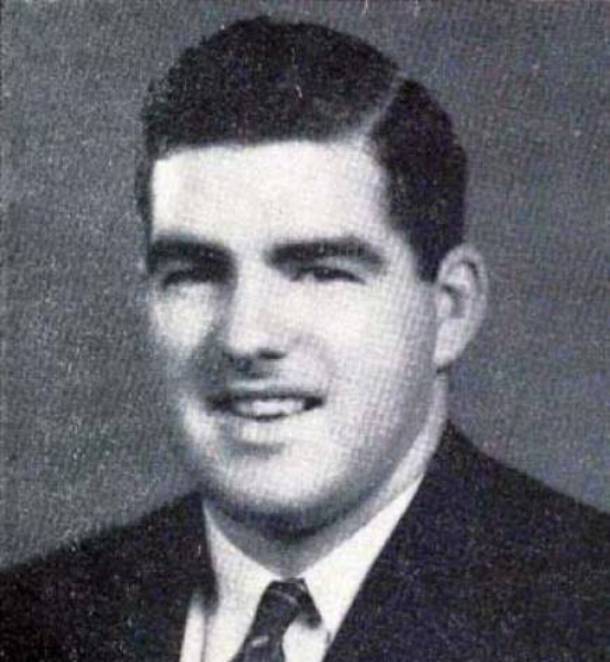 www.comicvine.com
www.comicvine.com Born in 1921 in Connecticut, Daghlian was an Armenian American physicist who worked for the Manhattan Project (research and development project that produced the first atomic bombs). He accidentally irradiated himself in August, 1945, during a critical mass experiment at the remote Omega Site facility in New Mexico. He died just 25 days later.
Wan Hu
 greatoldthings.blogspot.com
greatoldthings.blogspot.com According to a Chinese legend, Wan Hu, a sixteenth-century local government official during the Ming Dynasty, had ambitions to travel to the Moon by means of a special chair he designed with 47 attached rockets. This might have been true since the use of rockets has been reported all the way to the 13th century in China. After lighting the rockets, instead of shooting the ambitious government official into the air, the rockets exploded, killing the official.
Abu Nasr Isma'il ibn Hammad al-Jawhari
 www.businessinsider.sg
www.businessinsider.sg Born in today Kazakhstan, Jawhari was an author of a notable Arabic dictionary containing about 40,000 entries. Another thing which made him a well-known person in Arabic history was his attempt to fly with wooden wings. He leapt from the roof of a mosque in the old town of Nishapur and fell to his death.
Li Si
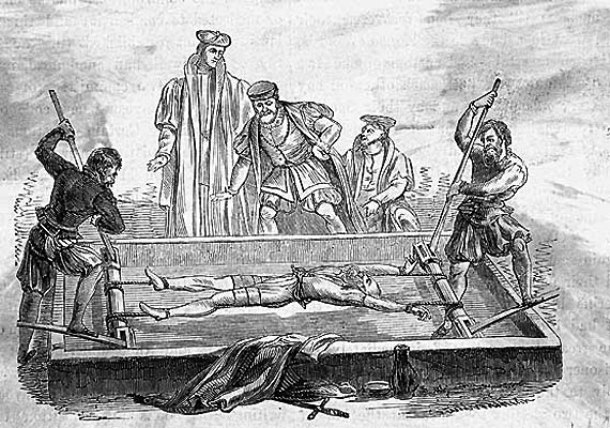 www.therichten.ca
www.therichten.ca Li Si was a famous legalist, calligrapher and influential Chancellor of the dynasty of Qin in China, between 246 BC and 208 BC. Li Si is also thought to be the inventor of a terrifying torturing method called the “Five Pains” (or “Five Punishments”). According to this brutal method, a victim’s forehead was first branded; then the nose was cut off; following that, the feet were cut off; then the victim was castrated; and finally executed. However, after the death of the emperor, Li Si was executed by his own invention.
Cowper Phipps Coles
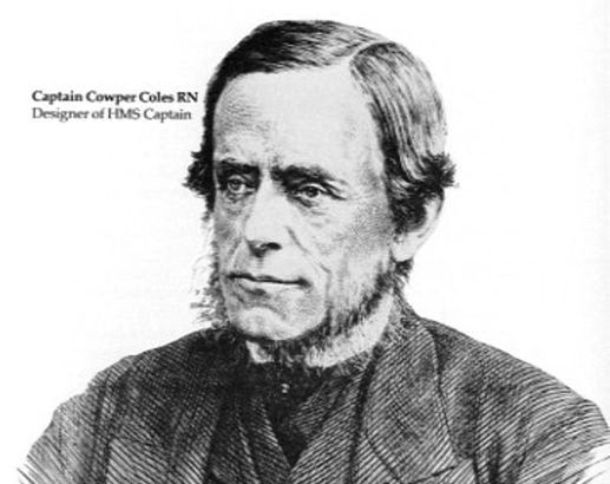 www.grijalvo.com
www.grijalvo.com Born in 1819, Coles was an English inventor and distinguished Royal Navy Captain who invented a rotating turret for ships during the Crimean War. After the war, his ship, the HMS Captain which was an experimental warship built to his designs, required several dangerous modifications, including a so called “hurricane deck” which raised the ship’s centre of gravity. In September 1870, the ship overturned and Coles together with most of 500 person crew drowned.
Henry Winstanley
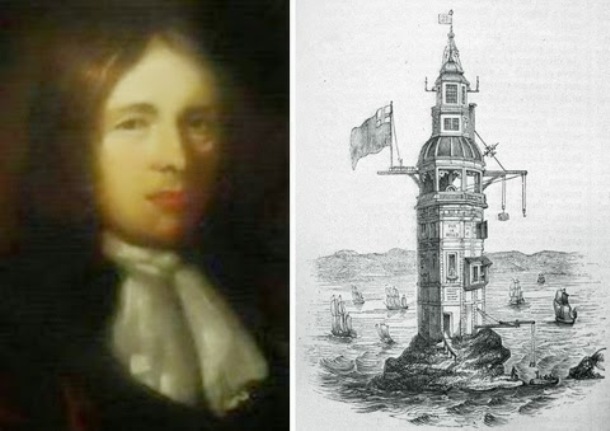 www.fatosdesconhecidos.com.br
www.fatosdesconhecidos.com.br Winstanley was an English painter and engineer most remembered for constructing the first Eddystone lighthouse. He was so confident with his construction that he expressed a wish to be inside the lighthouse during a great storm. He got his wish. The lighthouse collapsed in a huge storm on November 1703, killing Winstanley and five other people.
Thomas Andrews Jr
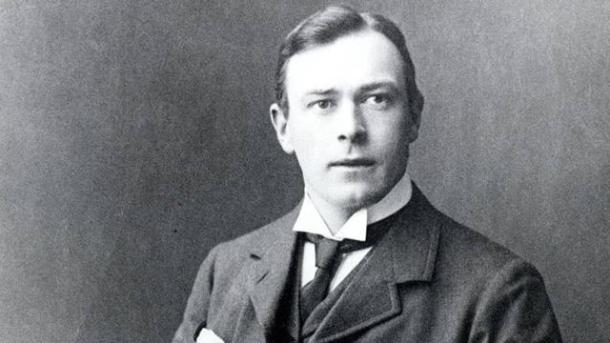 titanic-wsl.blog.cz
titanic-wsl.blog.cz Born in Comber, County Down, Ireland in 1873, Andrews was an Irish businessman, shipbuilder, managing director and head of the drafting department for the shipbuilding company Harland and Wolff in Belfast, Ireland. He was also the chief naval architect of the HMS Titanic and was onboard during its maiden voyage in April 1912. Andrews was one of more than 1,500 people who lost their lives in this infamous tragedy.
William Nelson
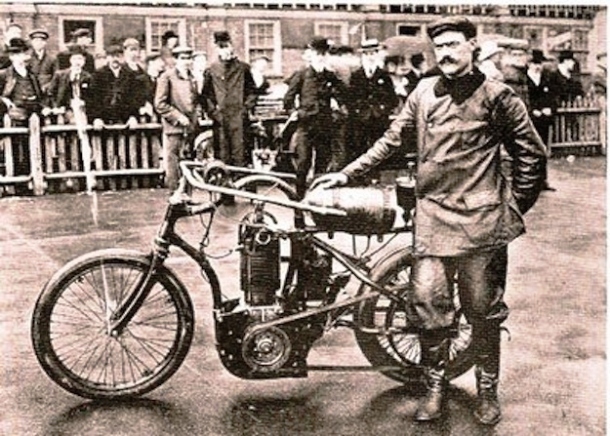 www.buzzfeed.com
www.buzzfeed.com Born in 1879, William Nelson was an American engineer and inventor who worked for General Electric. Specialized in motorizing bicycles, Nelson suffered a fatal injury while test-driving a prototype motorized bike for which he invented a motor in 1903.
Otto Lilienthal
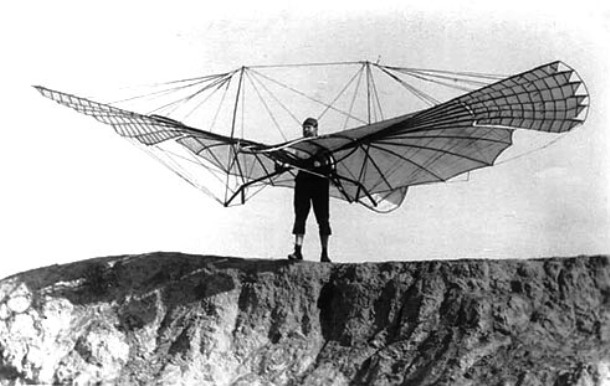 www.flyingmachines.org
www.flyingmachines.org Known as the “Glider King“, Lilienthal was a German pioneer of aviation who was the first person to make well-documented, successful gliding flights. He had made several successful flights, reaching a distance of up to 820 feet. However, during one of the flights his glider stalled and fell from a height of about 50 feet(15.24m). He fractured his neck and died about 36 hours after the crash.
Valerian Abakovsky
 whatculture.com
whatculture.com Born in 1895, Abakovsky was a Russian engineer famous for inventing the “Aerowagon“ – an experimental high-speed railcar fitted with an aircraft engine and propeller traction. The invention was successful on the outgoing leg from Moscow to Tula but on the way back to Moscow the Aerowagon derailed at a high speed, killing everyone on board, including Abakovsky himself.
Franz Reichelt
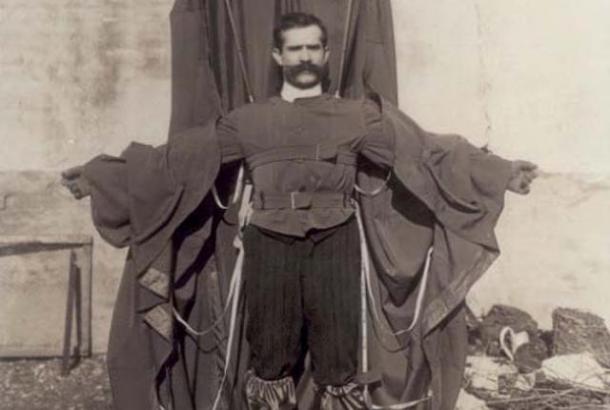 mentalfloss.com
mentalfloss.com Nicknamed “Flying Tailor“, Franz Reichelt was an Austrian-born French tailor, inventor and parachuting pioneer. Reichelt was working on a suit for aviators that would convert into a parachute and allow them to survive a fall from a plane. Initial experiments conducted with dummies dropped from the fifth floor of his apartment building had been successful so he decided to do the ultimate test by himself. He put his invention on and jumped off the Eifel Tower but the parachute failed to deploy and he crashed into the icy ground at the foot of the tower. The fall killed him immediately.
Henry Smolinski
 en.wikipedia.org
en.wikipedia.org Born in 1933, as one of eight children in a Polish-American family in Ohio, Henry Smolinski was a Northrop-trained engineer who joined a company focused on developing a flying car. In September 1973, he went on a test flight with a prototype made by fusing the rear end of a Cessna Skymaster airplane and a Ford Pinto but he had an accident in which he died together with the pilot.
Aurel Vlaicu
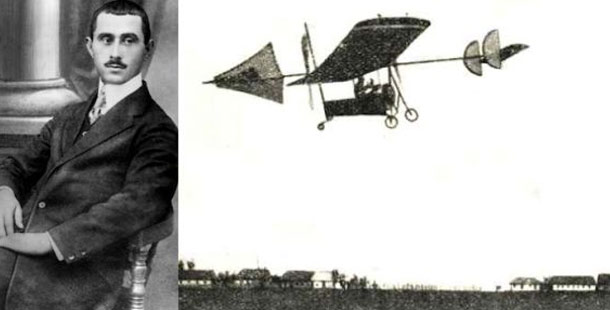 io9.com
io9.com Known for building the first metal airplane, Aurel Vlaicu died in 1913 while crashing into the Carpathian Mountains in his very own metal airplane, “Vlaicu II”.
Sieur Freminet
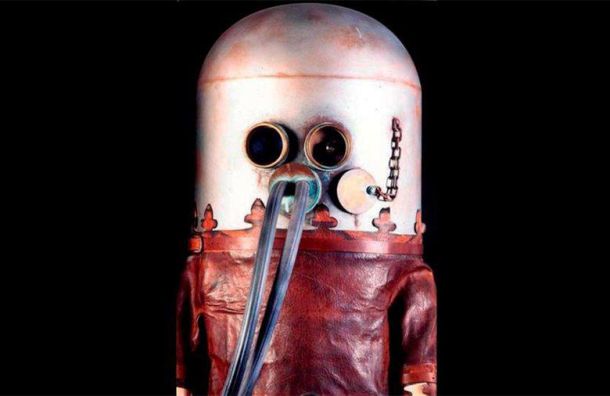 www.el-nacional.com
www.el-nacional.com In 1772, French inventor Sieur Freminet tried to create a rebreathing device for scuba diving that would recycle the exhaled air from inside of the barrel. Unfortunately, this self-contained air device was not good enough because Freminet died from a lack of oxygen after being in his own device for just twenty minutes.
Max Valier
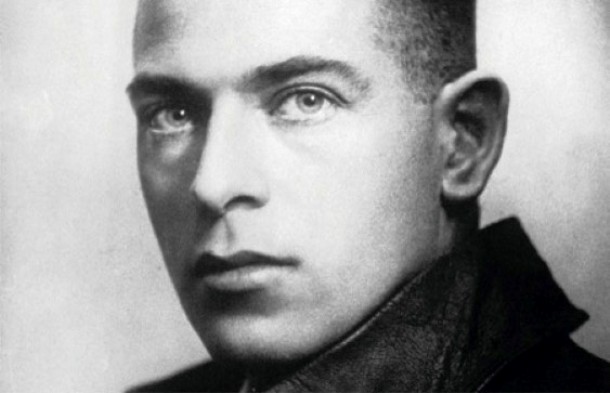 interestingengineering.com
interestingengineering.com Born in Bozen, Austria in 1895, Valier was a rocketry pioneer notable for his experiments with liquid fuelled rockets for rocket powered cars. In April 1930 he made a test drive of a rocket car, which was successful, but one month later he was killed when an alcohol-fuelled rocket exploded on his test bench in Berlin.
Alexander Bogdanov
This Russian physician, philosopher and science fiction writer was famous for attempting to achieve eternal youth by experimenting with blood transfusion. During his life, he underwent many of them and, ultimately it was one of the transfusions that cost him his life. In 1928, he took the blood of a student suffering from malaria and tuberculosis. Bogdanov died, but the student injected with his blood made a complete recovery.
Horace Lawson Hunley
 walyou.com
walyou.com H.L. Hunley was a Confederate marine engineer and inventor of the first combat submarine, CSS Hunley during the American Civil War. After two previous unsuccessful routine tests, Hunley took command of the submarine, but after failing to resurface, he and the seven other crew members drowned. Hunley was buried with full military honors at Magnolia Cemetery in Charleston, South Carolina.
Jean-François Pilâtre de Rozier
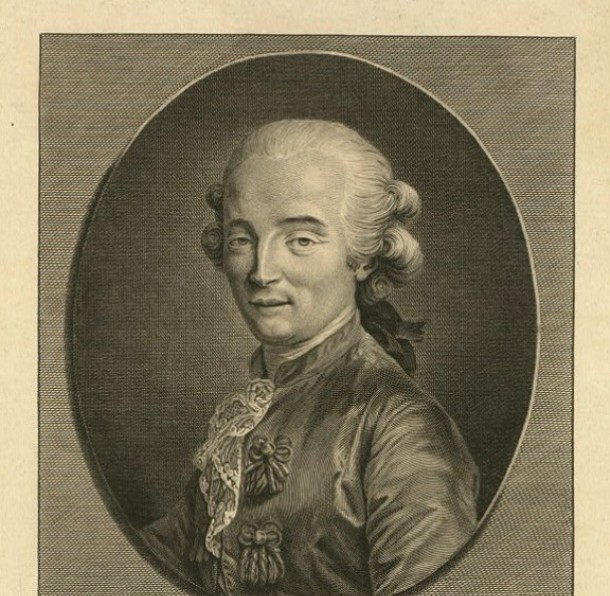 en.wikipedia.org
en.wikipedia.org Born in 1754, Rozier was a French chemistry and physics teacher, and one of the first pioneers of aviation. He invented the so call Roziere balloon a type of hybrid balloon that has separate chambers for both a non-heated as well as heated lifting gas. However, when he attempted to cross the English Channel in 1785, the balloon suddenly deflated and crashed from an estimated height of 1,500 feet(457.2m). Rozier and his companion were both killed.
William Bullock
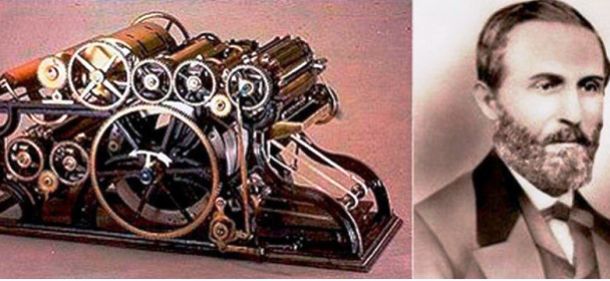 www.el-nacional.com
www.el-nacional.com William Bullock was an American inventor whose improvements to Richard March Hoe’s rotary printing press helped revolutionize the printing industry due to its great speed and efficiency. Unfortunately, just a few years after his invention, Bullock was accidentally killed by his own web rotary press. When adjusting the press, he kicked a driving belt on a pulley and got his leg crushed. He soon developed gangrene and died in a hospital during an operation to amputate the leg.
Karel Soucek
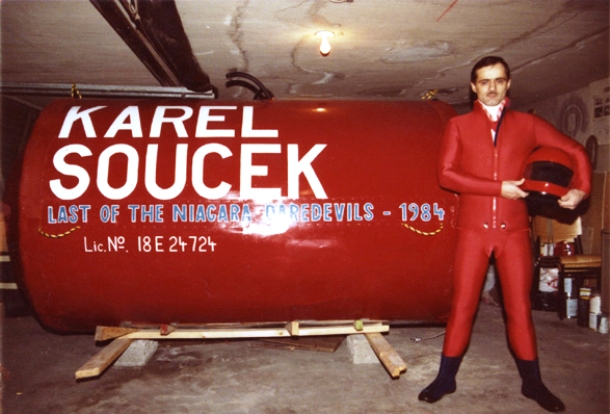 www.ebaumsworld.com
www.ebaumsworld.com Born in 1947 in former Czechoslovakia, this Canadian professional stuntman was famous for going over the Niagara Falls in a special shock-absorbing barrel he invented. One year later in 1985, Soucek performed another stunt. Enclosed in his barrel, he was dropped from the height of 180 feet above the floor from the Houston Astrodome into a water tank. But instead of landing in the center of the tank, the barrel hit the rim and Soucek, severely injured, died just a few hours after the stunt.
Thomas Midgley, Jr
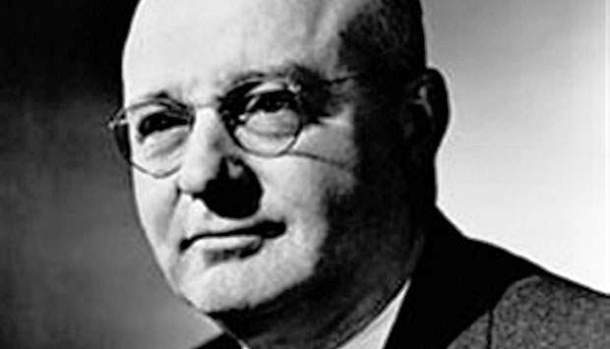 www.toptenfamous.com
www.toptenfamous.com This American mechanical engineer and chemist had been experimenting with dangerous things all his life. One of his most famous trials was his effort to prove fuel was safe by pouring leaded gasoline over his hands and sniffing it from a flask during a press conference. However, it was another of his inventions that ended his life. After coming down with polio at age of 51, he devised an elaborate system of ropes and pulleys to help others lift him from the bed. On November 2, 1944 he got entangled in the ropes and suffocated.
Sylvester H. Roper
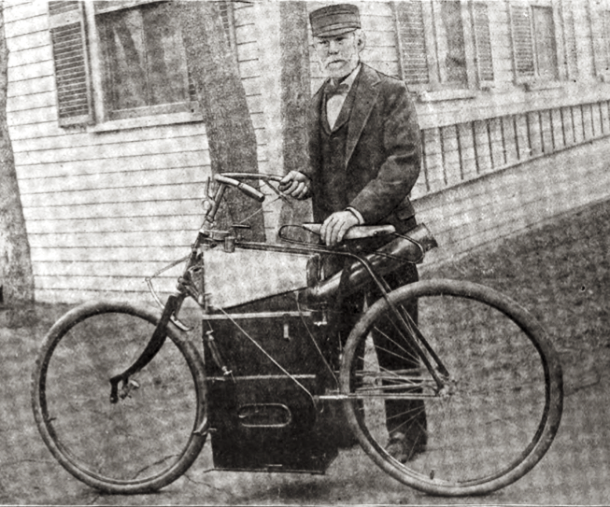 thevintagent.blogspot.com
thevintagent.blogspot.com Born in 1823, S.H. Roper was an inventor from Boston, Massachusetts, and a pioneering builder of early automobiles and motorcycles. He died of a heart attack or subsequent crash during a public speed trial in 1896 – it is still unknown if the crash was the cause of the stress on his heart, or if his heart gave out first which led to the crash.
Perillos of Athens
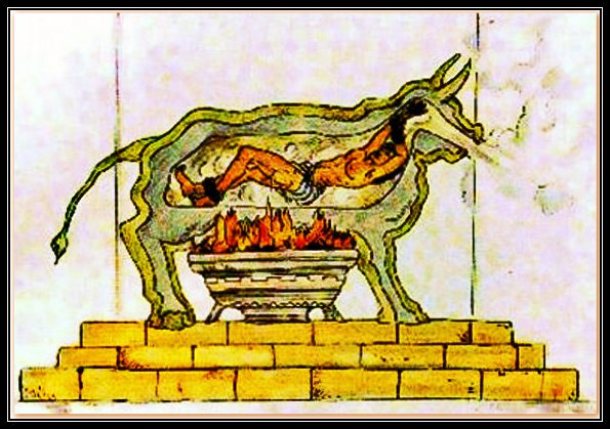 derwombat.net
derwombat.net Perillos of Athens was as a bronze worker in Ancient Greece who invented a torturing device known as the “Brazen Bull“ for purpose of executing criminals in a slow and agonizing death. Perillos proposed his invention to Phalaris, the tyrant of Akragas, Sicily who ordered the bull to be tested on Perillos himself. While some stories say Perillos was taken away from the device before he could die, others claim he was roasted in it.
Marie Curie
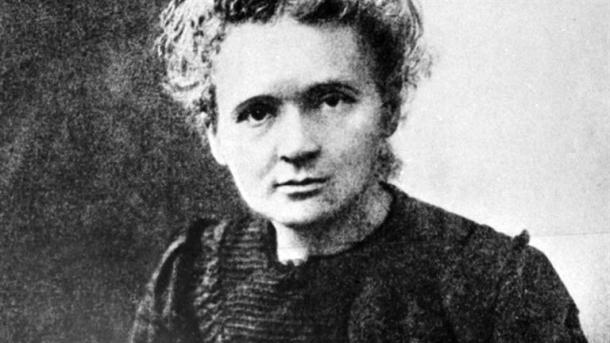 www.biography.com
www.biography.com This Polish and naturalized-French chemist was famous for her research on radioactivity and for being the first woman to not only winning a nobel prize, but win two of them. It was her research subject however that caused her death – she died on July 4, 1934, of aplastic anemia caused by radiation exposure.



























